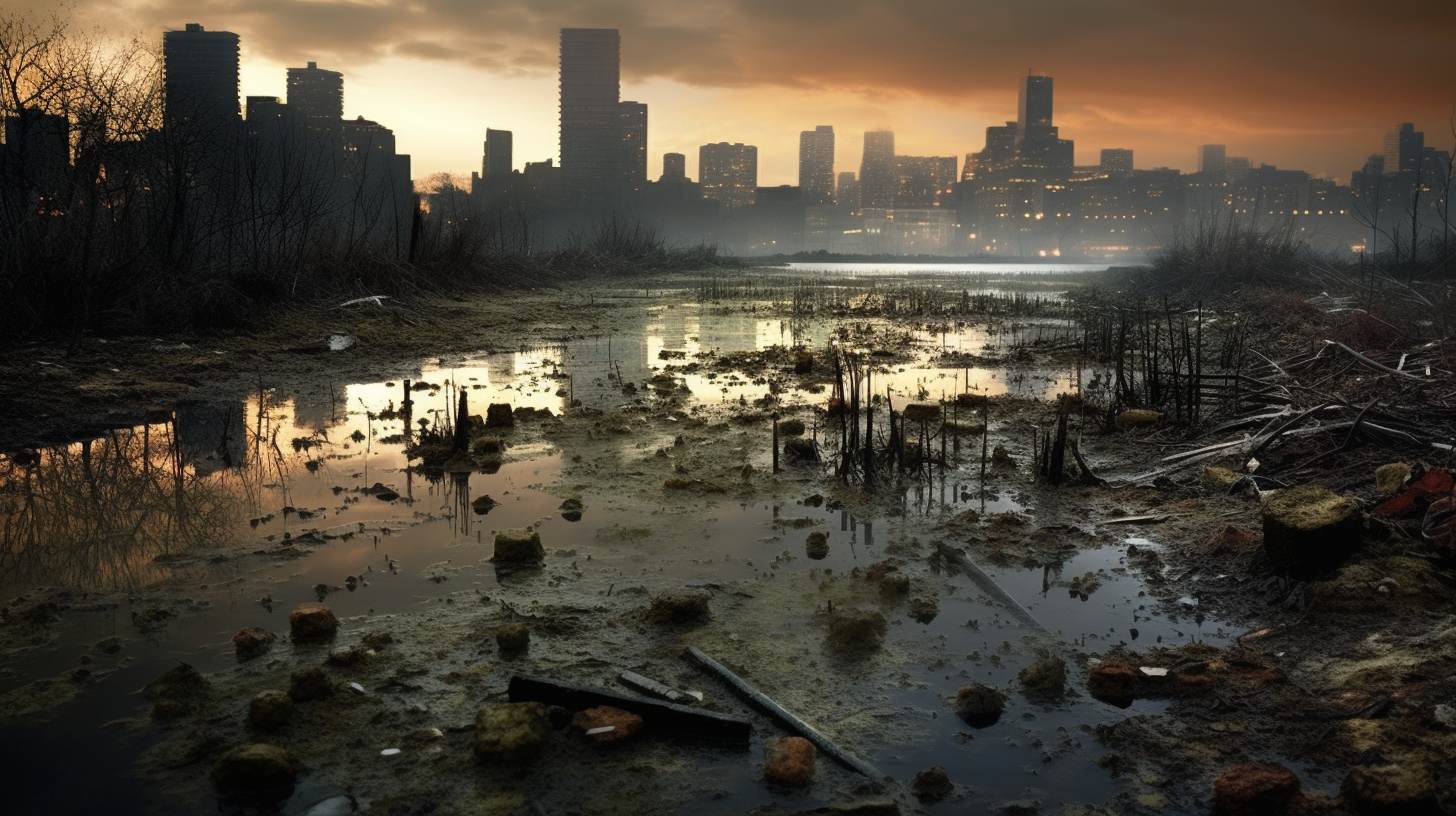In the relentless advance of water reclaiming land, our cities, those towering testimonies of human ingenuity, are now succumbing to a new reality. The concrete jungles we once marveled at, with skyscrapers piercing the clouds, are now becoming Doomed for Wetlands – waterlogged remnants of a civilization that believed itself outside the purview of nature’s whims.
As the borders between ocean and coast blur, an inevitable transformation washes over our urban landscapes. Streets where children once played and vendors hawked their wares are now canals for the somber gondolas patrolling our liquid avenues. The cities aren’t just facing flooding; they are morphing into something entirely new – amphibious metropolises.
The tragedy of integration is not just in the physical landscape, but also in the disappearing culture and history. In Venice, the once-iconic St. Mark’s Square is now a pool reflecting the forlorn faces of ancestral buildings. New York’s bustling Times Square has quieted, the electric hum replaced by the soft splash of tides against reappropriated storefronts. The mournful sounds of sea creatures echo off the walls where traffic horns used to blare.
But this is not a blanket narrative of despair. Out of necessity, ingenious adaptations have emerged – floating markets akin to Bangkok’s famous canal bazaars thrive, and elevated walkways have given rise to a new dimension of pedestrian travel. Our architecture now bows to the whims of water; buildings are designed to be flood-resistant, often aquatic farms themselves, similar to the visionary designs of Maria Gonçalves who pioneered aqua-agriculture in humanity’s New Aquatic Frontier.
And yet, the most striking transformation has been in the people themselves. Boat-building skills are now as commonplace as driving once was. Children learn to navigate the waterways with as much dexterity as their ancestors maneuvered through traffic. There’s a resilience, an adaptability to humanity that stands testament to the spirit which once built these urban behemoths.
In this watery world, renewable energy harvests strength from the adversity. Solar-powered vessels glide silently across the mirrored surface, while the misery of our past forgetfulness fuels wind turbines with relentless gusts. We are forced to harness nature’s power, not just because it’s sustainable, but because survival in these drowned cities depends on it.
The cruelest irony lies in the aesthetic beauty our dilapidated cities possess. As dusk falls, the half-submerged skyscrapers capture the fiery shades of the sky, creating a melancholy beauty that is as breathtaking as it is heartbreaking – a siren’s call reminding us of the world we’ve lost to our negligence.
However, make no mistake, there’s no romance to this resilience. The reality of these transformations speaks of a grave warning to the undamaged world. ‘Tis not a redemption tale, but a forced transformation thrust upon those with no other recourse – an echo of the necessity that becomes the mother of invention.
Even as our cities slowly submit to the tides, the human spirit seems unyielding, much like the submerged monuments that refuse to crumble under the waves. There’s a bizarre poetry in the intertwining of mankind’s permanence with nature’s indomitable force. We’ve become the inhabitants of a real-life Atlantis, a civilization to be studied by future generations, perhaps from under the sea.
Yet, this story does not conclude with the closing of a book, but rather opens up endless pages of survival epics that have yet to be written. What lessons will we inscribe on these watery tablets for the dry world to heed?
